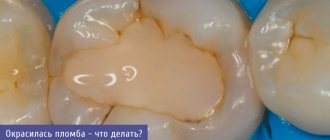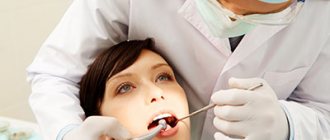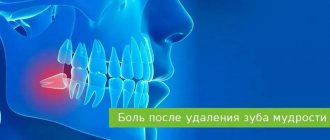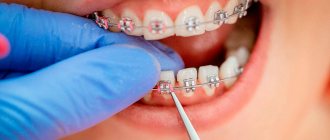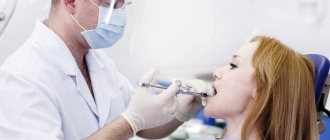You can contact Dr. Granov's clinic for treatment of jaw injuries. This is one of the areas of treatment that we do.
The jaw is the bony structure that holds the teeth in place. The upper jaw does not move, only the lower jaw moves. Its movements are necessary for eating food and for producing speech. Both jaws connect at a point called the temporomandibular joint (TMJ).
Jaw injuries include cracks, dislocations and fractures. With a fracture or crack, the bone breaks; with a dislocation, the bone changes location and flies out of the joint. Such injuries occur after physical activity (bruise, blow, fall). After appropriate treatment, they heal safely, but the dislocation may appear again.
Jaw injuries are dangerous because they can lead to various complications. Among them:
- breathing disorder,
- bleeding,
- blood entering the lungs
- problems with chewing food,
- problems with diction,
- infection of the jaw or facial structures,
- joint pain,
- numbness of the jaw or face,
- tooth displacement,
- edema.
Symptoms of a jaw fracture:
- pain in the cheek next to the ear, which increases with jaw movement;
- swelling of the face, blood in the mouth;
- immobility of the jaw, inability to open or close the mouth;
- when opening the mouth, only one side of the jaw moves;
- jaw pain that gets worse when chewing;
- dental injuries;
- swelling of the face or changes in the contours of the jaw;
- numbness of the face in the lower lip area.
Symptoms of a dislocated jaw:
- pain in the cheek next to the ear, which increases with jaw movement;
- feeling that the jaw is not positioned correctly in the joint;
- violation of diction;
- inability to close your mouth;
- drooling due to open mouth;
- spasm of the masticatory muscles or protrusion of the jaw forward;
- dental injuries.
First aid for jaw injuries
Jaw injuries require immediate medical attention. Call an ambulance or go to the nearest hospital. Before doctors arrive, you can put a bandage on your jaw to keep it immobilized. The bandage should be easy to remove.
Do not try to set a dislocation yourself or wait for the fracture to heal on its own. Be sure to contact a traumatologist.
Causes of bruises of the lower and upper jaw
- collisions with surfaces;
- various types of blows (during road accidents, collisions with other people, domestic fights, contact sports, accidental blows with objects, etc.);
- falling onto a hard surface.
Most often, signs of a bruise and fracture of the jaw occur in people against the background of road accidents, domestic conflicts, or industrial emergencies. In most cases, it is the lower jaw that is susceptible to bruises.
The severity and nature of the injury also depend on the following factors:
- collision zones;
- the type (and sharpness) of the object that had a detrimental effect on the bone;
- speed of collision or approach with an object;
- condition of facial tissues and bones during mechanical trauma.
We divide all dental injuries of children
- Bruise - characterized by only minor damage, a crack in the enamel, hemorrhages in the pulp chamber, swelling, or bruising on the gums may be observed.
- Subluxation - a damaged tooth is displaced, its ligamentous apparatus and neurovascular bundle are partially damaged, and tooth mobility is noted.
- Luxation - incomplete and complete - the tooth protrudes significantly from the dentition, barely maintaining connection with the socket, or even falls out of it. The integrity of the neurovascular bundle and ligamentous apparatus of the tooth is compromised.
- Fracture of the crown of the tooth.
- Tooth root fracture
Further in the article we will tell you how acute injury to baby teeth in children is characterized by an impact, how to recognize an injury to the front teeth, and how to treat any tooth injury in a child.
The main symptoms of a jaw bruise
- pain in the bruised area, which becomes especially severe with pressure and movement;
- inflammation of the lymph nodes;
- difficulties in speaking;
- it becomes painful for a person to chew;
- there is a loss of strength;
- a lump may form on the jaw;
- temperature rises;
- the jaw goes numb;
- swelling, redness, swelling, and hematomas are noticeable in the area of contact with an object or hard surface.
Unlike the symptoms of fractures, with bruises the jaw connects to the skull. Violation of the connection, as a rule, occurs in fractures (open and closed), dislocation, fracture, etc.
Folk remedies
There are several proven, simple and at the same time effective ways to have the positive effects of alternative medicine. They are indispensable products for pregnant women, children, as well as people who have a severe allergic reaction to medications. You can make a choice based on personal preferences or doctor’s recommendations.
Treatment at home for bruises can be carried out using the following means:
- Table salt solution. Compresses are prepared from it, which are used for any complexity of bruises. To prepare, a tablespoon of salt is dissolved in 150 ml of boiled water. Then take a sterile bandage, soak it in the solution and apply it to the problem area. The compress is covered with a thick cloth on top. The gauze pad with salt can be left overnight.
- Grated potatoes. The tubers should be washed and cleaned first. Grate one tuber on a coarse grater, place in linen cloth and wrap several times. After applying the bruise, cover the top with a thick towel. Compressor exposure time is 30-40 minutes. For best results, make 3-4 applications in a row.
- Cabbage leaf. Before applying it, you should knead it a little or make cuts on it to let the juice out. The sheet is applied to the sore spot 2-4 times a day until it dries completely.
- Onion and garlic. The two ingredients are ground and mixed together. The resulting slurry is added with half a tablespoon of salt; it is recommended to wrap the mixture in gauze and place it in the area of the bruise.
- Beetroot and liquid honey. Finely grated root vegetables are mixed with a tablespoon of natural honey. The procedure is carried out 1-2 times a day for 2 hours.
- Laundry soap. This remedy helps reduce the pain response. The soap is grated and mixed with raw chicken yolk. I apply a compress every half hour up to 6-8 times a day. You can also rub a damp cloth with laundry soap and apply an application to the bruised area.
- Apple vinegar. This is one of the most effective remedies. To prepare the solution, you need to take 2 teaspoons of vinegar and dilute it in 1 liter. water. Soak a clean cloth in the solution and apply 3-4 times a day for half an hour.
Popular folk remedies for bruises
The video in this article shows how to properly apply a warm and cold compress for bruises.
What to do if your jaw hurts?
If your jaw hurts, it hurts to chew, and the above symptoms are also observed, you should urgently contact a jaw surgeon-traumatologist.
First aid for such injuries looks like this:
- apply a bandage;
- use cold (applications made of ice, snow, frozen objects wrapped in fabric or polyethylene);
- rest until examined by a doctor;
- if your jaw hurts badly on the right or left, you can take a painkiller.
Until the doctor examines you, you should never heat the bone or place it in direct sunlight, so as not to provoke a deterioration in the patient’s condition.
Trauma to the front teeth in a child
The front teeth in children are most often injured. And while injury to other teeth may go unnoticed, injury to a child’s front teeth quickly attracts the attention of parents. An ordinary bruise, in which only a barely noticeable crack in the enamel can be visually seen, may not bother the child in any way. In some cases, there may be discomfort or pain during chewing, or mechanical stress, and slight swelling of the soft tissues.
It’s another matter if, as a result of an injury, a subluxation, dislocation, or even fracture of a tooth occurs. Then the injury to the child’s front teeth is primarily visually noticeable. In the case of subluxation or dislocation, parents may notice an atypical position of the tooth, its slight displacement relative to other teeth. In addition, with this type of injury to the front teeth, bleeding, swelling of the soft tissues, inflammation, severe pain, and mobility of the injured tooth will be noted.
Children often experience fractures of their front teeth. It will be characterized by a violation of the integrity of hard tissues, chipping of a part of the tooth, pain, bleeding, swelling of soft tissues, and hemorrhages in them.
Diagnosis and treatment of jaw bruises
For minor injuries, including cracks in the jaw, hospitalization of the patient is not necessary. The following steps are used for diagnostics:
- general examination by a dentist, maxillofacial surgeon, orthopedist-traumatologist. You may need to consult a neurologist (for example, in the case of a parallel concussion) or an otolaryngologist (if the ENT organs are affected);
- radiography of the maxillofacial area;
- computed tomogram (CT).
Based on the existing picture of the patient’s health condition, treatment will be prescribed. Main stages of therapy:
- creating maximum rest for the patient (bed rest);
- applying a pressure bandage;
- warming procedures for the regeneration of hematomas and restoration of damaged tissues (you can use dry heat, a lamp, ozokerite applications and other physiotherapy procedures);
- use of painkillers.
To avoid negative consequences, you need to provide competent and timely medical care to the victim, undergo diagnostics in a trusted clinic, and follow all the doctor’s recommendations and prescriptions.
Jaw fracture
This is perhaps one of the most obvious reasons for severe jaw pain. The cause-and-effect relationship between blow - jaw fracture - pain is clear to everyone. Among the first symptoms indicating a fracture rather than a bruise are: unbearable pain, difficulty opening the mouth, malocclusion, swelling, bruising. In this case, immediate contact with an ambulance and maxillofacial surgery is required.
If you feel that your jaw hurts, do not delay in seeing a doctor, as this symptom may be a sign of the onset of a dangerous disease.
You can also read the article “Surgical dentistry”.
What happens if you don’t seek help in time?
- post-traumatic periostitis or inflammation of the periosteum;
- jaw deformation;
- inflammatory process of bone tissue;
- contractures or weakening of joint mobility;
- development of tumor processes (oncology).
Thus, if any mechanical injuries occur in the relevant area, it is imperative to contact a medical facility. The sooner you visit an experienced doctor, the sooner you will eliminate complications and return to a normal lifestyle.
Indications for removal of eighth teeth
wisdom teeth
begin to grow much later than other permanent teeth, as a result of which they often do not have enough space in the jaw. Lack of space provokes all sorts of curvature of roots and crowns. Doctors advise removing such molars. Here is another list of problems that may require extraction:
- A pronounced tilt of the figure eight towards the seventh tooth or cheek.
- Hypercementosis (excessive deposition of secondary cement, in which the tooth root thickens and becomes deformed).
- Incomplete eruption of the tooth or its location in the bone (retention).
- Destruction of the crown or roots of the figure eight, as well as neighboring teeth (after injury or caries).
- Granuloma (granulation in the form of cystic sacs with pus located in the periodontium).
- Rotation of the tooth around its axis or horizontal position (dystopia).
- Deformation of the roots (they can bend in every possible way, even twist into a spiral or form an angle of 90°).
- The close location of the roots of the upper eights to the nasal maxillary sinuses.
- In the presence of pericoronitis (an acute inflammatory process in the area of the eruption of the figure eight, accompanied by pain and an increase in ESR in blood tests).
An incorrectly growing 8th tooth can compress the facial nerves and provoke neuritis, which is expressed by sharp pain radiating to the ears, neck, temple, and can lead to facial paralysis.
Complications
What to do after a tooth injury? The answer is clear - contact your dentist immediately. Even if it seems to you that the injury was not severe, you do not experience pain, there is no bleeding. Not a single blow passes without leaving a trace on the body, and its consequences will sooner or later make themselves felt. A bruise can lead to various complications:
- Dying of the pulp. During a bruise, nerve endings are damaged, neighboring tissues gradually die, an inflammatory process develops, purulent formations and cysts form.
- Darkening of the crown. Occurs due to rupture of blood vessels. At first the enamel takes on a pink tint and then darkens. The crown tissues do not receive the necessary nutrients. Even if it is possible to maintain the integrity of the tooth, it will stand out in the row due to the changed color. Regular bleaching cannot remove darkening.
- Periodontal damage. In this case, the bruise leads to the development of periodontitis.
Children's bruises do not go away without a trace, so if your baby falls and hits himself, he needs to be shown to the dentist. A long-term consequence of such injury is abnormal growth of permanent teeth.
First aid
Before proceeding with the treatment of the emerging pathology, the victim should be given first aid and taken for examination to a traumatologist in order to refute more serious damage to the bones of the skull (fracture, dislocation, displacement).
First of all, it is necessary, using available auxiliary items, to ensure cooling of the injured area. If the injury occurred at home, it is recommended to apply ice, frozen meat, vegetables or fruits to the bruised area of skin.
It is worth remembering that direct contact of the cold compress with the skin is not allowed. It is better to wrap ice products with a towel, rag or bag.
If the injury occurred on the street or in another place where it is not possible to get ice from the refrigerator, doctors recommend using snow, rags (pieces of things) soaked in cold water, bottles of cold water or iron tools. In such situations, it is also very important to avoid direct contact of the object with the skin, because you can introduce an unfavorable infection into the resulting wound area.
To eliminate excessively intense pain, you can take a non-steroidal painkiller.
Under no circumstances should heating the damaged area be allowed. Such manipulations do not improve, but only worsen the situation.
The jaws, the field of a cold compress, should be kept at rest (wrap with a bandage or other material at hand) and go for examination to the hospital, where the doctor will tell you in more detail about the treatment of the bruise.
Diagnostic methods
To identify existing damage and refute more severe injuries, the doctor performs the following diagnostic procedures:
- Visual inspection of the area that has been subjected to increased mechanical stress;
- Palpation of injured areas;
- X-ray of the skull;
- Magnetic resonance and computed tomography, ultrasound (in rare cases).
Based on the results of the study, the doctor describes in detail the method of caring for the injury and prescribes medications that speed up the process of treating the bruise.

